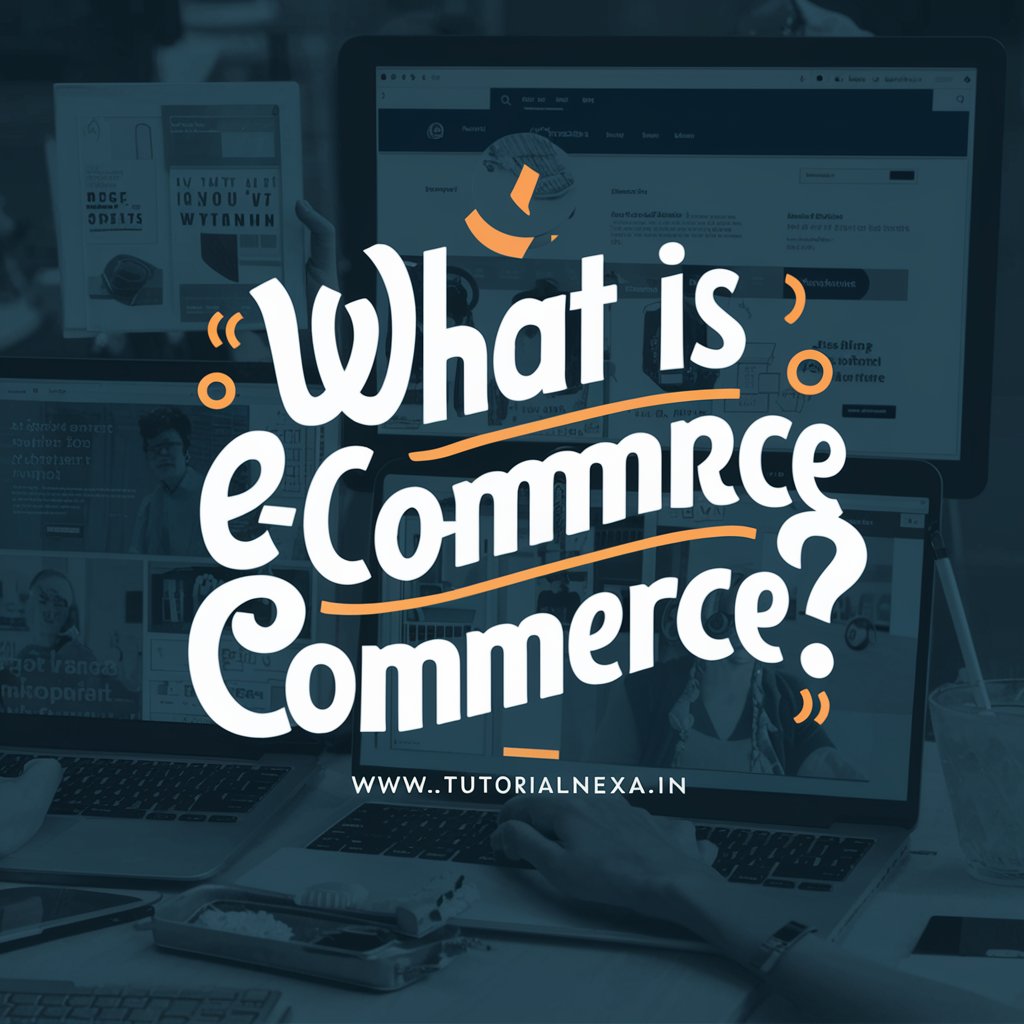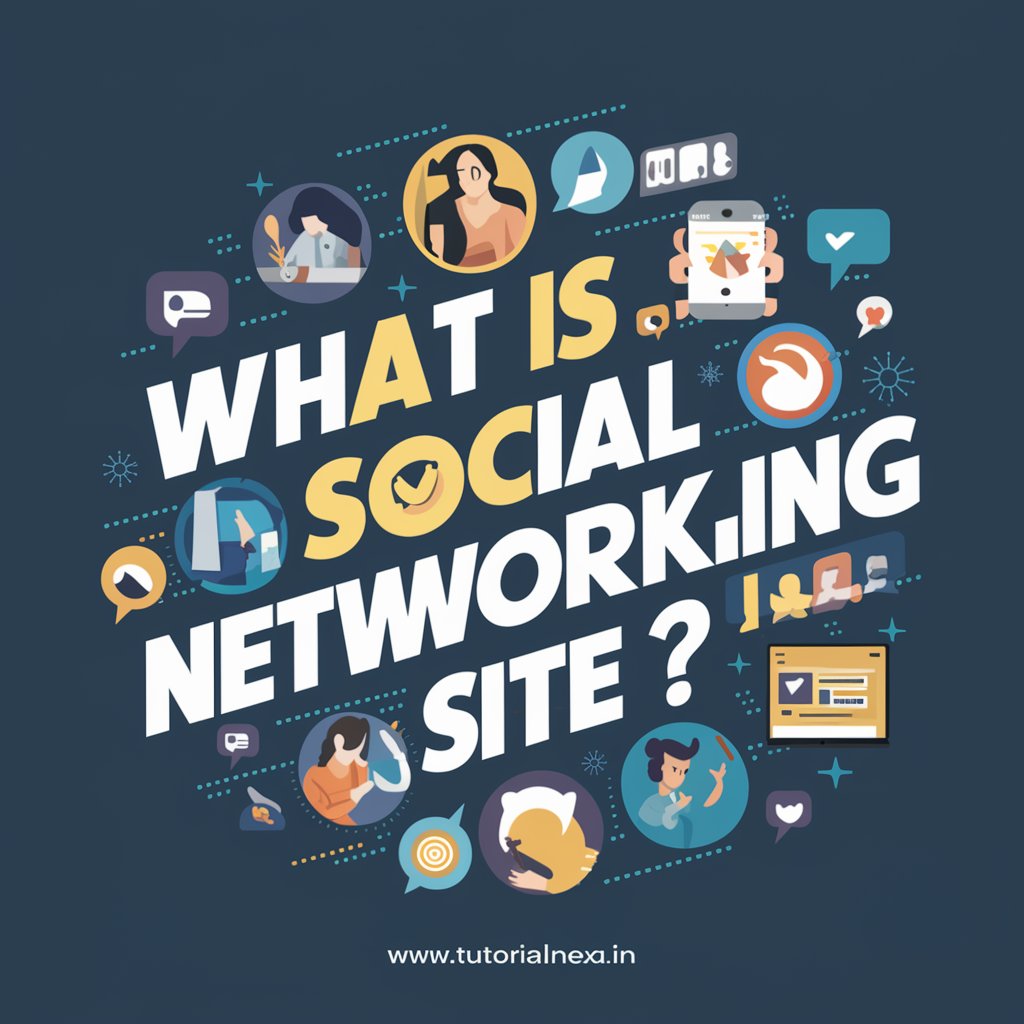What is E-Commerce?

E-commerce stands for “electronic commerce.” It’s a way of buying and selling things over the internet. Imagine shopping online for clothes or ordering your favorite pizza through a website or app. That’s e-commerce! Let’s look at the different types of e-commerce:
Types of E-Commerce
- B2B (Business-to-Business):
- This is when one business sells products or services to another business.
- Example: A car parts manufacturer selling components to an automobile assembly plant.
- B2C (Business-to-Consumer):
- In B2C e-commerce, businesses sell directly to individual customers.
- Example: Amazon selling books, gadgets, and clothing to people like you and me.
- C2B (Consumer-to-Business):
- Here, individual customers offer products or services to businesses.
- Example: Freelancers offering their services on platforms like Upwork or Fiverr.
- C2C (Consumer-to-Consumer):
- C2C e-commerce happens when individuals sell things to other individuals.
- Example: You selling your old phone on a platform like eBay to another person.
In Brief:
| Type of E-Commerce | Explanation | Example |
|---|---|---|
| B2B | Businesses selling to businesses | Car parts manufacturer to an automobile assembly plant |
| B2C | Businesses selling to individual customers | Amazon selling to shoppers |
| C2B | Individual customers offering services to businesses | Freelancers on Upwork |
| C2C | Individuals selling to other individuals | Selling on eBay |
E-commerce makes buying and selling convenient and accessible for everyone. Whether you’re a big company, a small business, or an individual, there’s a type of e-commerce that suits your needs. It’s all about making transactions happen online, anytime and anywhere!
Difference Between Online and Offline Services

Online Services:
- Access via the Internet: Online services are provided through the internet. You need an internet connection to use them.
- Convenience: You can access online services from anywhere with an internet connection, making them convenient for users.
- Examples:
- Social media platforms like Facebook and Instagram
- Online shopping websites such as Amazon and eBay
- Streaming services like Netflix and Spotify
- 24/7 Availability: Online services are often available 24/7, allowing users to access them at any time.
- Instant Updates: Online services can be updated instantly, providing the latest information or features to users.
Offline Services:
- No Internet Required: Offline services do not need an internet connection. They are accessible without being connected to the web.
- Limited Accessibility: You can only use offline services in specific locations or with physical access.
- Examples:
- Local grocery stores
- In-person classes or workshops
- Brick-and-mortar banks
- Operating Hours: Offline services operate during specific hours, typically when their physical locations are open.
- Delayed Updates: Changes or updates to offline services may take time to reach users, such as new store policies or product availability.
Summary in Table Format:
| Aspect | Online Services | Offline Services |
|---|---|---|
| Access Method | Requires internet connection | No internet required |
| Accessibility | Anywhere with internet access | Limited to specific locations |
| Examples | Social media, online shopping, | Grocery stores, in-person |
| streaming services | classes, brick-and-mortar banks | |
| Availability | 24/7 | Limited to operating hours |
| Updates | Instant | May be delayed |
What is Netbanking?

Netbanking, or internet banking, is a convenient way for people to manage their bank accounts, pay bills, and perform financial transactions using the internet. It allows you to access your bank account 24/7 from the comfort of your home or anywhere with an internet connection. Netbanking is a secure and user-friendly way to handle your finances without visiting a physical bank branch.
How does Netbanking work?
- Login: To get started with netbanking, you need to log in to your bank’s official website using your unique username and password.
- Account Overview: Once logged in, you can see an overview of your account, including your account balance, recent transactions, and more.
- Bill Payments: You can pay your bills online, such as electricity, water, or credit card bills. Enter the bill details and confirm the payment.
- Fund Transfers: Netbanking allows you to transfer money between your own accounts or to other people’s accounts within the same bank or other banks.
- Mobile Recharge: You can top up your mobile phone or prepaid services directly through netbanking.
- Check Account Statements: Access and download your account statements for a specific period to keep track of your financial activities.
- Fixed Deposits: Open, manage, or close fixed deposit accounts through netbanking.
- Investments: You can make investments, such as purchasing mutual funds or trading in stocks, using netbanking if your bank offers these services.
Example of Netbanking:
Let’s say you have a bank account with XYZ Bank, and you want to pay your monthly electricity bill through netbanking.
- Log in to XYZ Bank’s official website using your username and password.
- Go to the “Bill Payments” section.
- Select “Electricity” as the biller category.
- Enter your electricity account number and the amount you wish to pay.
- Review the payment details and confirm the transaction.
- Your electricity bill is paid, and you’ll receive a confirmation message or email.
Benefits of Netbanking:
- Convenience: Access your bank accounts and perform transactions from anywhere at any time.
- Time-Saving: Avoid long queues and waiting at the bank.
- 24/7 Access: Netbanking is available 24 hours a day, seven days a week.
- Paperless: Reduce the need for physical paperwork.
- Secure: Banks use encryption and security measures to protect your financial information.
Concerns about Netbanking:
- Security: Protect your login credentials and never share them with anyone.
- Phishing: Be cautious of fraudulent emails or websites posing as your bank.
- Internet Connection: Ensure you have a secure and reliable internet connection.
Table: Benefits and Concerns of Netbanking
| Benefits | Concerns |
|---|---|
| Convenience | Security |
| Time-Saving | Phishing |
| 24/7 Access | Internet Connection |
| Paperless | |
| Secure |
What is Online Customer Support?

Online customer support is a way to help people when they have questions or problems while using a website or an online service. It’s like having a friendly guide available on the internet to assist you.
Why Online Customer Support Matters
1. Instant Help
- Online customer support provides quick answers to your questions.
- You don’t have to wait on hold like you might with a phone call.
2. Convenience
- It’s available 24/7, so you can get help anytime, even in the middle of the night.
- You can use it from the comfort of your home or wherever you are online.
3. Problem Solving
- Customer support can help you fix issues with products or services.
- They guide you through troubleshooting steps.
4. Friendly Assistance
- Support agents are there to be helpful and friendly.
- They aim to make your experience better.
How Online Customer Support Works
1. Live Chat
- A chat window pops up on the website.
- You type your questions, and an agent responds in real-time.
2. Email Support
- You send an email with your questions or issues.
- The support team replies by email.
3. Phone Support
- You call a customer support phone number.
- A person on the other end assists you.
4. FAQs and Knowledge Base
- Websites often have a section with frequently asked questions.
- You can find answers to common problems there.
Table Summary
| Aspect | Description |
|---|---|
| Benefits | – Quick, 24/7 assistance – Convenient- Problem-solving – Friendly support |
| Methods | – Live chat- Email support – Phone support – FAQs and knowledge base |
| Purpose | To help users with questions and issues online |
Online customer support is a valuable resource for anyone using the internet. It’s like having a helpful friend always available to assist you when you need it.
What Is Social Networking Sites

Social networking sites are websites or apps where people can connect and interact with others online. They have become popular in recent years and have changed the way we communicate and share information with one another. Here’s a simple explanation in points:
Social Networking Sites: An Overview
- Online Communities: Social networking sites are like virtual communities where people with similar interests or connections can come together.
- User Profiles: Users create profiles with their personal information, photos, and interests. This helps others get to know them.
- Friendship: You can send or accept friend requests to connect with others on the platform.
- Sharing: Users can share thoughts, photos, videos, and more with their friends or the public.
- Messaging: Most social networks have messaging features for private conversations with friends.
- Followers: Some platforms allow you to follow people you’re interested in, even if they’re not your friends.
Examples of Social Networking Sites
Here are some popular social networking sites:
| Social Network | Description |
|---|---|
| A platform to connect with friends and share posts. | |
| Focused on sharing photos and short videos. | |
| Known for short messages called “tweets.” | |
| A professional network for job and career networking. | |
| Primarily used for sharing and discovering images. | |
| Snapchat | Messaging app with disappearing photo and video posts. |
In Brief
- Definition: Social networking sites are online platforms where people connect, create profiles, and share content with friends or the public.
- Examples: Facebook, Instagram, Twitter, LinkedIn, Pinterest, Snapchat, etc.
- Purpose: They allow people to stay connected, share their lives, and discover content and connections that interest them.
Various Modes of Online Payment

Online payment methods have become an essential part of our daily lives. They offer convenience, speed, and security when making transactions over the internet. Here are some common modes of online payment:
1. NEFT (National Electronic Funds Transfer)
- NEFT is a method to transfer money from one bank account to another.
- It operates on a deferred settlement basis, meaning transactions are processed in batches and can take some time to complete.
- NEFT is typically used for transferring larger sums of money between banks.
2. RTGS (Real-Time Gross Settlement)
- RTGS is a real-time electronic funds transfer system in India.
- It ensures instantaneous money transfer with immediate settlement.
- RTGS is primarily used for high-value and time-sensitive transactions.
3. UPI (Unified Payments Interface)
- UPI is a popular payment system that enables instant fund transfers between bank accounts using a mobile app.
- Users can make payments, check account balances, and link multiple bank accounts to a single UPI ID.
- UPI has revolutionized peer-to-peer transactions in India.
4. Credit Card
- A credit card is a plastic card issued by banks or financial institutions.
- It allows users to make purchases on credit and repay the amount at a later date.
- Credit cards are widely accepted for online and offline transactions.
5. E-Wallet (Electronic Wallet)
- E-wallets are digital applications that store payment card information, including credit cards and debit cards.
- Users can load money into their e-wallets and make payments at online and offline merchants.
- Popular e-wallets include Paytm, Google Pay, and PayPal.
6. Debit Card
- A debit card is a plastic card linked to a bank account.
- It allows users to make purchases using the funds available in their bank account.
- Debit cards are commonly used for online and in-store shopping.
7. Internet Banking
- Internet banking, or online banking, lets you manage your bank account over the internet.
- It includes features like fund transfers, bill payments, and account statements.
- Internet banking is accessible through a bank’s website or a dedicated app.
8. Prepaid Cards
- Prepaid cards are loaded with a specific amount of money and can be used for online and in-store purchases.
- They are not linked to a bank account and offer budget control.
- Common examples include prepaid gift cards and travel cards.
9. Mobile Wallets
- Mobile wallets are smartphone apps that store payment card information.
- Users can make contactless payments using NFC technology at compatible terminals.
- Mobile wallets like Apple Pay and Samsung Pay are widely used.
10. Cryptocurrency
- Cryptocurrency is a digital or virtual currency that can be used for online payments.
- It operates on blockchain technology and is gaining popularity as a means of payment.
- Bitcoin, Ethereum, and Litecoin are examples of cryptocurrencies.
Summary in Table Format:
| Payment Method | Description |
|---|---|
| NEFT (National Electronic Funds Transfer) | Bank-to-bank transfer, deferred settlement |
| RTGS (Real-Time Gross Settlement) | Instant bank-to-bank transfer |
| UPI (Unified Payments Interface) | Mobile app-based peer-to-peer transfers |
| Credit Card | Pay later with a line of credit |
| E-Wallet (Electronic Wallet) | Digital apps for storing payment info |
| Debit Card | Use funds directly from linked bank account |
| Internet Banking | Manage accounts online through a bank’s website or app |
| Prepaid Cards | Loaded with specific amounts for purchases |
| Mobile Wallets | Use smartphone apps for contactless payments |
| Cryptocurrency | Digital currencies like Bitcoin and Ethereum |
These online payment methods offer various options to cater to different preferences and financial needs. Depending on your requirements, you can choose the one that suits you best.
Traditional Business vs. Online Business: What’s the Difference?

Traditional Business:
- Physical Presence: Traditional businesses have a physical location, like a store, office, or factory.
- Limited Operating Hours: They usually operate during specific hours each day.
- Local Reach: Their customers are typically local or from nearby areas.
- Higher Overheads: Traditional businesses often have higher expenses due to rent, utilities, and in-person staff.
- Face-to-Face Interaction: Customers interact with the business in person.
- Slower Growth: Expanding to new locations can be slow and costly.
Online Business:
- Virtual Presence: Online businesses exist on the internet without a physical storefront.
- 24/7 Availability: They can operate 24/7, allowing customers to shop at any time.
- Global Reach: Online businesses can reach a global audience.
- Lower Overheads: They have reduced overhead costs as they don’t need physical spaces or as many in-person staff.
- Digital Interaction: Customers interact with the business through websites, apps, or social media.
- Rapid Growth: Expanding to new markets is quicker and more cost-effective.
Examples:
Let’s consider two examples to illustrate the differences:
Traditional Business Example – Local Bakery:
- Physical Presence: A bakery has a physical store where customers visit to buy fresh bread and pastries.
- Limited Operating Hours: It operates from 7 AM to 7 PM, six days a week.
- Local Reach: Most customers live within a 10-mile radius.
- Higher Overheads: Rent, electricity, and in-store staff salaries contribute to high operating costs.
- Face-to-Face Interaction: Customers meet bakers and see products in person.
- Slower Growth: Opening a new bakery branch in a different town takes time and investment.
Online Business Example – E-commerce Store:
- Virtual Presence: An e-commerce store operates entirely on a website.
- 24/7 Availability: Customers can shop online 24/7 from anywhere in the world.
- Global Reach: Customers can order from different countries.
- Lower Overheads: The store avoids rent and hires fewer staff due to automation.
- Digital Interaction: Customers browse products, read reviews, and make purchases online.
- Rapid Growth: Expanding to new markets or adding more products online is relatively quick and cost-efficient.
Summary (Table Format):
| Aspect | Traditional Business | Online Business |
|---|---|---|
| Physical Presence | Yes | No |
| Operating Hours | Limited | 24/7 |
| Local/Global Reach | Local | Global |
| Overhead Costs | Higher | Lower |
| Customer Interaction | In-Person | Digital |
| Expansion | Slower | Rapid |
In conclusion, traditional and online businesses have distinct characteristics that impact their operations, reach, and growth potential. The choice between the two depends on the nature of the business and its goals.
Online Reservation: Advantages and Disadvantages

What is Online Reservation?
Online reservation refers to the process of booking or reserving services, products, or accommodations over the internet. This convenient system allows individuals to make bookings or appointments through websites or applications, saving time and reducing the need for physical interactions.
Advantages of Online Reservation
- Convenience: Users can make reservations 24/7, eliminating the need to adhere to specific business hours.
- Time-Saving: Online reservations are quick and efficient, avoiding long wait times on phone calls or in-person visits.
- Easy Access: Users can book from anywhere with an internet connection, providing global accessibility.
- Transparent Information: Users can view pricing, availability, and reviews before making a reservation.
- Automated Reminders: Many online reservation systems send automatic reminders, reducing the risk of missed appointments.
- Reduced Errors: Human errors in recording reservations are minimized with automated systems.
- Cost-Effective: Businesses can save on administrative costs and reduce the need for additional staff to manage bookings.
Disadvantages of Online Reservation
- Technical Issues: Glitches or system downtime can disrupt the reservation process.
- Limited Personalization: Some users prefer personalized service that online booking systems may not provide.
- Privacy Concerns: Users may worry about their personal data being misused or shared without consent.
- Overbooking: Automated systems may sometimes allow for more reservations than available slots, leading to overbooking issues.
- Lack of Human Interaction: Some customers prefer the assistance and advice of a human agent when making reservations.
- Dependence on Internet: Online reservation is inaccessible to those without an internet connection.
Example
Imagine you want to book a hotel room for your upcoming vacation. You visit a hotel’s website, enter your check-in and check-out dates, and choose your room type. After providing your payment information, you receive a confirmation email with all the details of your reservation. This entire process is an online reservation.
Summary in Table Format
| Aspect | Advantages | Disadvantages |
|---|---|---|
| Convenience | 24/7 availability | Technical issues |
| Time-Saving | Quick and efficient | Limited personalization |
| Easy Access | Global accessibility | Privacy concerns |
| Transparent Info | Price and availability information | Overbooking |
| Automated Reminders | Reduces missed appointments | Lack of human interaction |
| Reduced Errors | Minimized human errors | Dependence on the internet |
| Cost-Effective | Reduces administrative costs |
Online reservations offer numerous benefits but may not suit everyone’s preferences or needs. It’s important to weigh these advantages and disadvantages when deciding to use online reservation systems.
What is Online Shopping?

Online shopping is when you buy things on the internet. Instead of going to a physical store, you use your computer or phone to order and pay for the items you want. These items are then delivered to your home.
Advantages of Online Shopping
1. Convenience
- Shop from the comfort of your home.
- No need to travel or stand in long lines.
- Shop 24/7, even on holidays.
2. Variety
- Access to a wide range of products and brands.
- Compare prices and read reviews easily.
3. Savings
- Find discounts and deals.
- Save on transportation costs.
4. Time-Saving
- Quick and efficient shopping experience.
- Avoid crowded stores and parking hassles.
5. Privacy
- Shop privately without the need for face-to-face interactions.
Disadvantages of Online Shopping
1. Shipping Delays
- Items may take time to arrive, causing inconvenience.
- Shipping costs can add up.
2. No Physical Inspection
- You can’t touch or try on products before buying.
- Quality and size may differ from your expectations.
3. Security Risks
- Risk of online scams or fraud.
- Need to share personal and payment information.
4. Return Hassles
- Returning items can be complicated and costly.
- Some items may not be returnable.
5. Limited Social Interaction
- Miss out on in-person shopping experiences.
- Less chance to ask questions and get advice.
Example
Let’s say you want to buy a new pair of shoes. With online shopping, you can browse different shoe stores, compare prices, read reviews, and order your favorite pair. The shoes will be delivered to your doorstep, saving you time and effort.
| Advantages | Disadvantages |
|---|---|
| 1. Convenience | 1. Shipping Delays |
| 2. Variety | 2. No Physical Inspection |
| 3. Savings | 3. Security Risks |
| 4. Time-Saving | 4. Return Hassles |
| 5. Privacy | 5. Limited Social Interaction |
In summary, online shopping is a convenient way to buy a wide range of products from your home, but it comes with potential delays, security risks, and a lack of physical interaction.

Online Submission of Forms
Introduction
- Online submission of forms is a way to send important information or requests through the internet.
Advantages of Online Form Submission
- Convenience: Submitting forms online is easy and can be done from anywhere with internet access.
- Time-saving: No need to travel or stand in long lines; you can submit forms with just a few clicks.
- Accessibility: Online forms are available 24/7, making it convenient for people with busy schedules.
- Accuracy: Digital forms reduce the chances of errors compared to handwritten forms.
- Environmentally friendly: It reduces the use of paper, helping the environment.
Examples of Online Form Submission
- College Applications: Applying to universities or colleges by filling out forms on their websites.
- Job Applications: Submitting your resume and information through online job portals.
- Tax Filing: Filing your income tax return online through government websites.
- Online Shopping: Completing purchase and payment forms on e-commerce websites.
- Event Registration: Signing up for events, workshops, or conferences online.
Steps for Online Form Submission
- Visit the website where the form is available.
- Find the specific form you need to submit.
- Fill in the required information in the provided fields.
- Upload any necessary documents, if required.
- Review the form for accuracy and completeness.
- Click the “Submit” or “Send” button to send the form electronically.
Table: Pros and Cons of Online Form Submission
| Pros | Cons |
|---|---|
| 1. Convenient | 1. Digital security concerns |
| 2. Time-saving | 2. Technical difficulties |
| 3. Accessibility | 3. Limited access for some |
| 4. Accuracy | individuals |
| 5. Environmentally | 4. Need for internet connection |
| friendly | 5. Potential data breaches |
What is Online Marketing?

Online marketing is a way to promote and sell products or services using the internet. It’s like telling people about things you like or want to sell on the internet, instead of in person.
Examples of Online Marketing:
- Social Media: Using platforms like Facebook, Instagram, and Twitter to post pictures and information about products or services.
- Email Marketing: Sending emails to people who are interested in your products or services to let them know about special offers or new items.
- Search Engine Marketing: Paying to show your website at the top of search results when people look for specific keywords.
- Content Marketing: Writing articles or making videos to share helpful information related to your products, which can attract people to your website.
What is Online Shopping?
Online shopping means buying things from the internet. You choose items you like, put them in a virtual shopping cart, and then pay for them online. After that, the items are delivered to your home.
Examples of Online Shopping:
- Amazon: You can buy almost anything, from books to clothes to electronics, on Amazon’s website.
- eBay: A place where people can buy and sell all kinds of items, including both new and used ones.
- Etsy: A website where you can find handmade and unique products, often from small businesses.
- Walmart Online: The online version of the popular Walmart store, where you can buy groceries, electronics, and more.
Summary in Table Format:
| Aspect | Online Marketing | Online Shopping |
|---|---|---|
| Definition | Promoting products or services on the internet | Buying products or services from the internet |
| Methods | Social media, email marketing, SEO, content | E-commerce websites, online marketplaces |
| Examples | Facebook ads, email newsletters, blog posts | Amazon, eBay, Etsy, Walmart Online |
| Purpose | Attract customers and increase sales | Convenient shopping, access to a wide range of items |
| Delivery of Products | Digital information or services | Physical products delivered to your doorstep |
In simple terms, online marketing helps businesses tell people about their products online, while online shopping allows you to buy things on the internet and have them delivered to your home.
